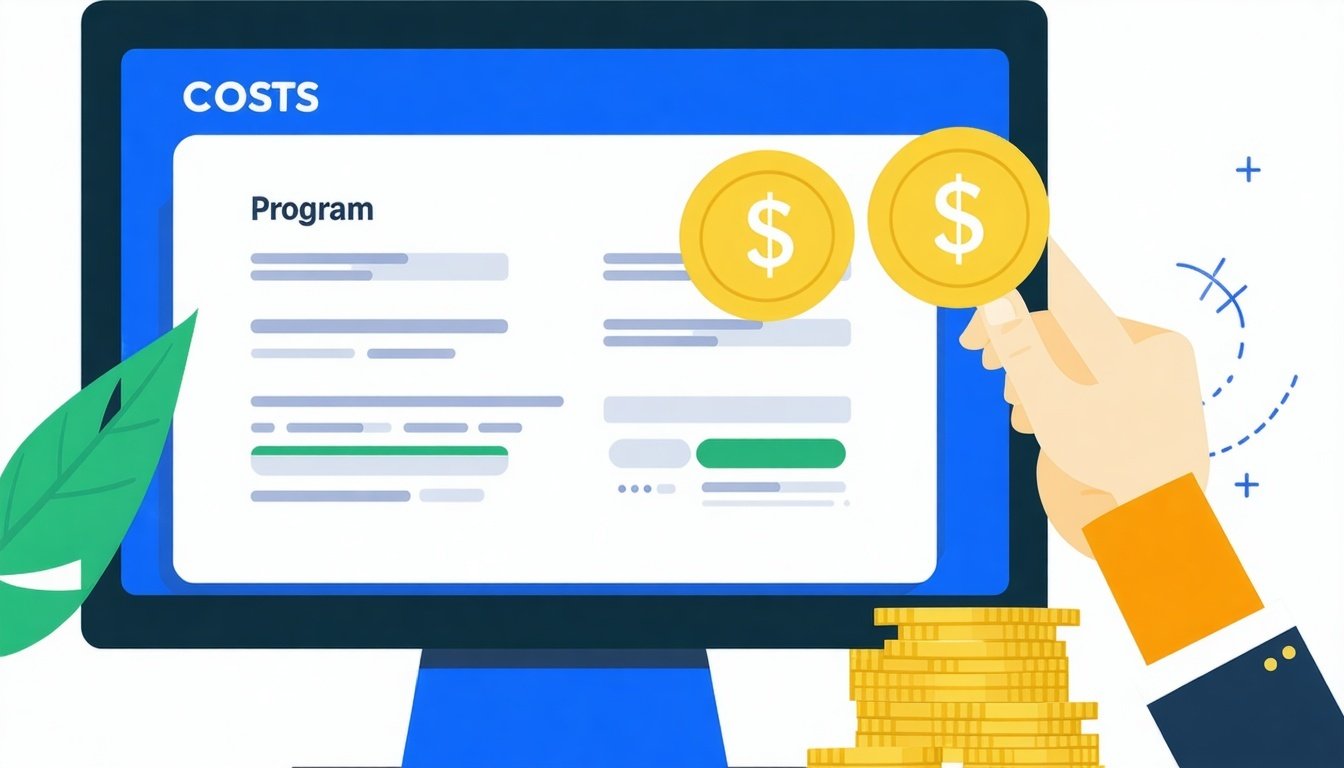Once considered the most critical step for career development in the U.S., the H-1B work visa is now leaving more and more international talent in uncertain situations.The review process has become increasingly strict, and even those who manage to submit a petition successfully are not guaranteed approval. A wave of rejections under the new administration has caught many F-1 visa holders—who were already working stably in the U.S.—off guard. A single rejection letter can derail well-laid career plans and turn "What should I do next?" into the central concern for thousands of international students.
However, an H-1B denial does not necessarily mean the end of your career path in the U.S.—the key lies in how quickly you can adjust your status, remain in the country legally, and avoid interrupting your employment. Faced with expiring immigration status and the approaching end of OPT, more and more individuals are turning their attention to another increasingly discussed option: Day 1 CPT programs. But are these programs truly a legal and sustainable way to maintain status? Or are they merely a short-term workaround? When traditional paths become uncertain, what we need most is not a hasty decision, but a deep understanding of every available option.
This article will explain the possible reasons for H-1B denial, as well as effective alternative pathways and actionable next steps.
Table of Contents
-
Possible Reasons for H-1B Denial
-
How to Determine If There’s Still Room for Reconsideration
-
Status Maintenance Issues
-
Exploring Other Visa Options and Alternative Paths
-
Specific Next Steps and Actionable Advice
-
Conclusion
1. Possible Reasons for H-1B Denial
H-1B petitions can be denied for a variety of reasons, including but not limited to:
-
Specialty Occupation Dispute: USCIS may determine that your job does not meet the criteria of a "specialty occupation," or that your academic background is not sufficiently related to the position being offered.
-
Employer Qualification Issues: These include concerns over the company's small size, unclear job projects, or weak financial standing. IT outsourcing firms or small consulting companies are particularly prone to such scrutiny.
-
Status Maintenance Problems: If you failed to maintain valid F-1, OPT, or CPT status at the time of application, USCIS may consider you out of status, which can result in a denial.
-
Insufficient Response to RFE: If you received a Request for Evidence (RFE) but submitted inadequate documentation or missed the response deadline, your case could be denied.
Recommendation: Contact an immigration attorney as soon as possible to obtain and review the full denial notice in order to understand the specific reasons for your rejection.
2. How to Determine If There’s Still Room for Reconsideration (Appeal / Refile)
After receiving a denial, it's important to quickly assess whether any options remain for salvaging the case. Consider the following:
-
Did You Receive a Formal Denial Letter? This is critical to determine whether your case is officially closed. If you're still in the RFE (Request for Evidence) stage and haven't received a denial, there may still be time to submit additional materials.
-
Does the Denial Letter Mention a “Motion to Reopen” or “Appeal”? Some denials may allow for the filing of a Motion to Reopen or an Appeal, particularly if the rejection was based on procedural or factual errors.
-
Legal Assessment by an Attorney: Immediately consult the immigration attorney who handled your H-1B petition. Ask for a professional opinion on whether the denial could be contested or if a refile is advisable. If you did not use a lawyer for the initial application, consider seeking a second opinion from an experienced immigration attorney, especially if you believe the denial was based on weak or unjustified reasoning.
Note: Appeals are often difficult to win unless there is a clear adjudication mistake. In most cases, refiling or exploring alternative options may be more practical.
3. Status Maintenance Issues (Maintaining Status)
What Happens If There’s No Backup Plan?
If your H-1B was denied and you don’t have a pending change of status or another valid visa, you could be facing a serious issue. Many don’t realize how fast things can escalate, especially if you’ve been relying on Cap-Gap after your OPT expired. Once your H-1B is denied, that Cap-Gap ends immediately. You're no longer in status.
That doesn’t mean you have zero time. In many cases, you have up to 60 days of grace period if your OPT expired within the past two months. But if you’ve already used up most of that window, you’re on a tight clock.
What can you do during this period? You’ll need to find a way to stay legally in the U.S. That means transferring into another valid visa status as quickly as possible. There are limited paths to do that—some people file for a B-2 (tourist visa), others leave and re-enter later, but many consider going back to school.

Start a free consultation on Day 1 CPT
Book a 1:1 consultation to find the program most suitable for you
4. Exploring Other Visa Options and Alternative Paths
Once a denial happens, you need to quickly evaluate your backup options. Let’s go over the main possibilities:
-
B-2 Tourist Visa: You can file a change of status to B-2 to buy time. But this doesn’t give you work authorization. It’s a “pause” button at best, and processing times can be slow.
-
Leave the U.S. and Return Later: Not ideal, especially if you have no visa stamp or face reentry risks. But it’s clean and avoids overstaying.
-
Start a New Degree Program: Many consider enrolling in a new master’s program, especially one that allows for Curricular Practical Training (CPT) from Day 1.
Why do so many turn to Day 1 CPT programs? Because if done properly, they can allow you to stay in status and continue working while you prepare for your next H-1B filing.
What Is Day 1 CPT and Why Has It Become a Popular Option?
Day 1 CPT (Curricular Practical Training) is a legal form of off-campus work authorization that allows international students to engage in employment related to their field of study while enrolled in school. Unlike traditional CPT, Day 1 CPT programs allow students to begin practical training from the very first day of the academic program, making it suitable for those with urgent status needs.
Why is Day 1 CPT a suitable option for H-1B-denied applicants?
-
No need to leave the U.S.; status can be changed internally (Change of Status)
-
I-20 issued quickly, with application process starting in just a few days
-
Seamless transition of status and employment, avoiding falling out of status
-
Ability to continue working for the same employer without switching jobs
-
Wide range of program options across business, IT, engineering, education, and more

Start a free consultation on Day 1 CPT
Book a 1:1 consultation to find the program most suitable for you
5. Next‑Step Planning Recommendations
An H‑1B denial does not mean your journey to stay and work in the United States is over. The key is to calmly assess your current status, employment arrangement, and career plan, and then act quickly with a practical solution. Below are several concrete steps you can consider:
1️⃣Confirm Your Current Status (Grace Period).
-
If you are currently on F‑1 status with OPT or STEM OPT, you generally still have a 60‑day grace period after the H‑1B denial;
-
If you had already changed to H‑1B status and were denied, confirm whether your previous F‑1 SEVIS record can be reactivated;
-
If you are unsure about your status, contact your school’s international student office or an immigration attorney immediately.
2️⃣Quickly Evaluate Whether a Day 1 CPT Program Fits Your Situation.
If you:
Want to continue working legally in the United States; Have an employer willing to keep you on (full‑time or part‑time); Hold a bachelor’s or master’s degree related to your current job and have not earned the same‑level degree in the U.S.; then transferring into a Day 1 CPT master’s program can be a fast, secure, no‑travel solution.
-
Most Day 1 CPT schools offer flexible start dates every month or every other month (e.g., Westcliff, Monroe, University of the Cumberlands, etc.);
-
Allow legal internship/work from the first day of enrollment, keeping your career on track;
-
Provide hybrid online + in‑person classes, making schedule management easier for working professionals;
-
Programs are legitimate and accredited (ACBSP, WASC, SACS, etc.), supporting long‑term plans.
3️⃣Prepare Transfer Documents and Sync Your Enrollment Date ASAP.
Prepare the following items quickly to transfer smoothly into a Day 1 CPT school:
-
Passport, I‑20, and visa page copies
-
Current OPT or SEVIS information
-
Undergraduate and graduate transcripts and diplomas
-
Employer support letter (confirming continued internship/work)
At the same time, choose a major that matches your academic or professional background to avoid future scrutiny over a “major mismatch.”
4️⃣ Keep Future Options Open: Second H‑1B Attempt or Green Card Path.
Even after an H‑1B denial, as long as you maintain legal status and keep your employer relationship, you can still:
-
Enter the next H‑1B lottery (if STEM OPT or CPT is still valid);
-
Pursue employer‑sponsored EB green card categories (suitable for those planning long‑term U.S. residency);
-
Consider switching to L‑1, O‑1, or other visa types.
5️⃣ Act Immediately to Avoid Falling into a “Status Dilemma.”
After H‑1B results are released each year, many applicants get stuck in short‑term anxiety and hesitation, missing the best transfer window. Once the grace period ends, you face risks such as:
-
Being deemed unlawfully present, which creates a negative record;
-
Losing the ability to work and maintain income;
-
Being forced to leave the U.S. or incurring high legal fees.
Best strategy: Complete the Day 1 CPT transfer and SEVIS activation within the grace period to ensure a seamless status transition.
Conclusion: In Every Crisis, There Is Opportunity
An H-1B denial is indeed disappointing. However, it is just a checkpoint, not the end of the road, in the journey of maintaining status and advancing your career in the U.S. As long as you remain calm and take prompt action, there are still many legal and sustainable paths available to you.
Day 1 CPT is not a quick fix to avoid reality; rather, it is a practical choice within the framework of lawful status to continue your career development and secure future opportunities. Especially in today’s immigration environment, the most critical question for international professionals is how to "maintain status, keep a job, and hold onto opportunities."
Don't let hesitation and delay cause you to miss the only window of opportunity. GoElite, as a leading provider of Day 1 CPT consulting and academic planning services in the U.S., has already helped thousands of students successfully transition their status, keep their jobs, and regain control over their U.S. stay through cost-effective programs after an H-1B setback. Act now, turn crisis into opportunity.

Start a free consultation on Day 1 CPT
Book a 1:1 consultation to find the program most suitable for you
You May Also Like
These Related Stories
Why Are Day 1 CPT Program Costs So Different? Is a More Expensive Program Worth It?


Why Are Day 1 CPT Program Costs So Different? Is a More Expensive Program Worth It?
5/7/2025
5
min read
How Many Hours Do I Spend on Homework in Hybrid Professional Programs


How Many Hours Do I Spend on Homework in Hybrid Professional Programs
5/7/2025
5
min read
Harrisburg Day 1 CPT
.jpg)
.jpg)
Harrisburg Day 1 CPT
6/3/2024
4
min read
%20(1).jpg?width=288&height=480&name=%E9%87%8E%E7%81%AB%E4%B8%8A%E5%B2%B8%E7%BE%A4%E4%BA%8C%E7%BB%B4%E7%A0%81%20(600%20x%201800%20px)%20(1).jpg)
No Comments Yet
Let us know what you think